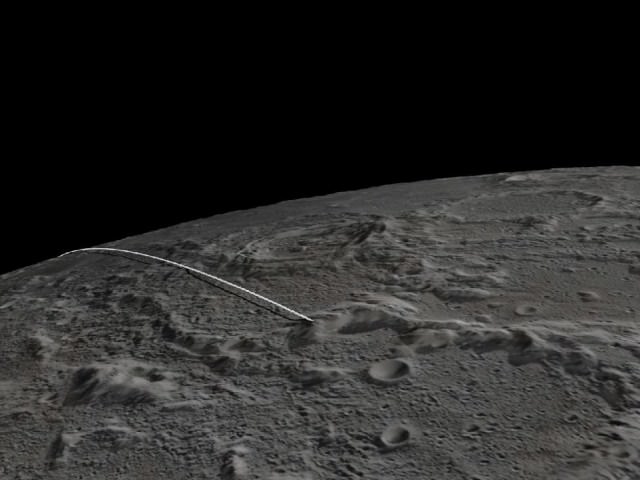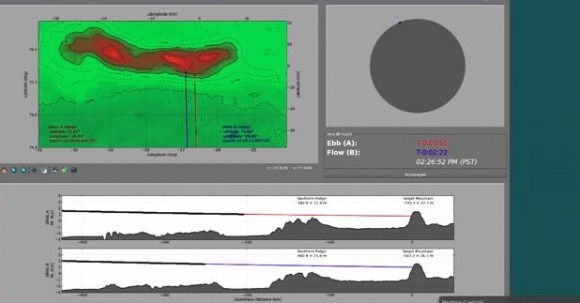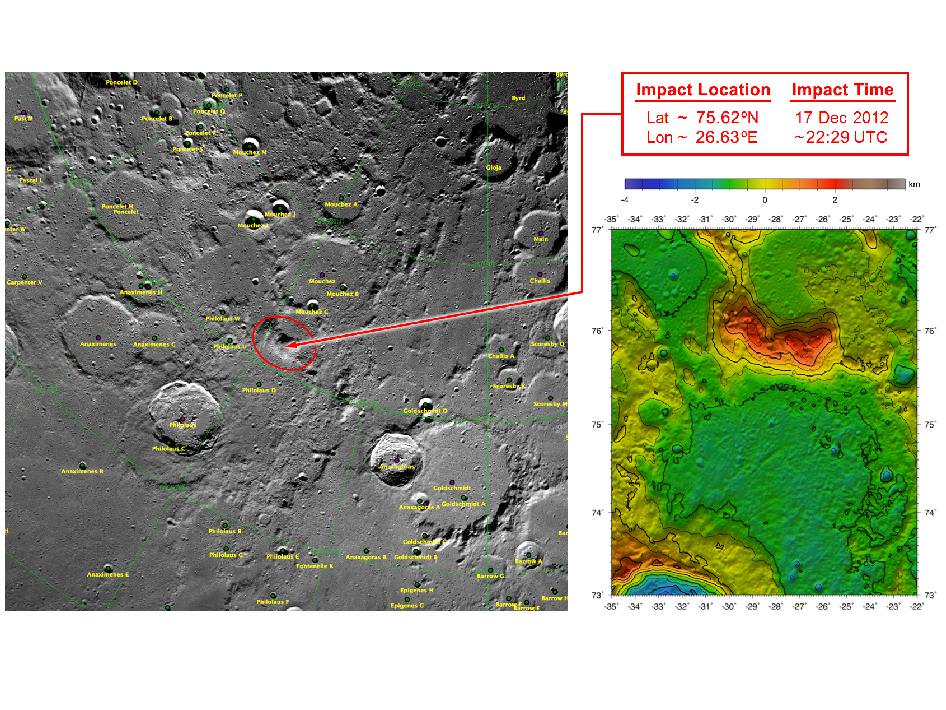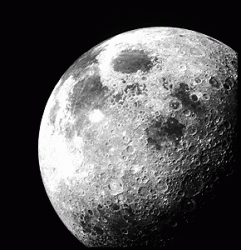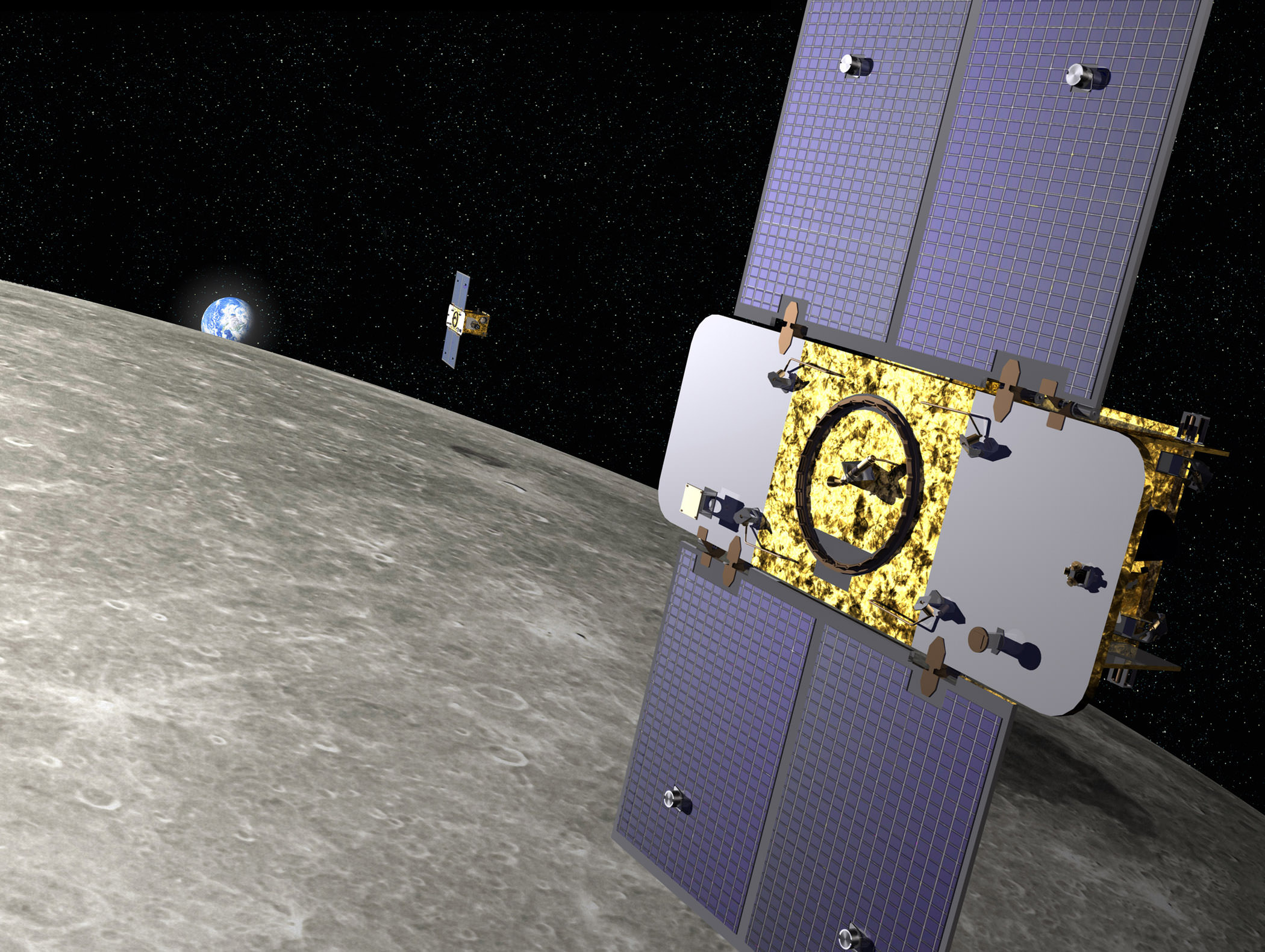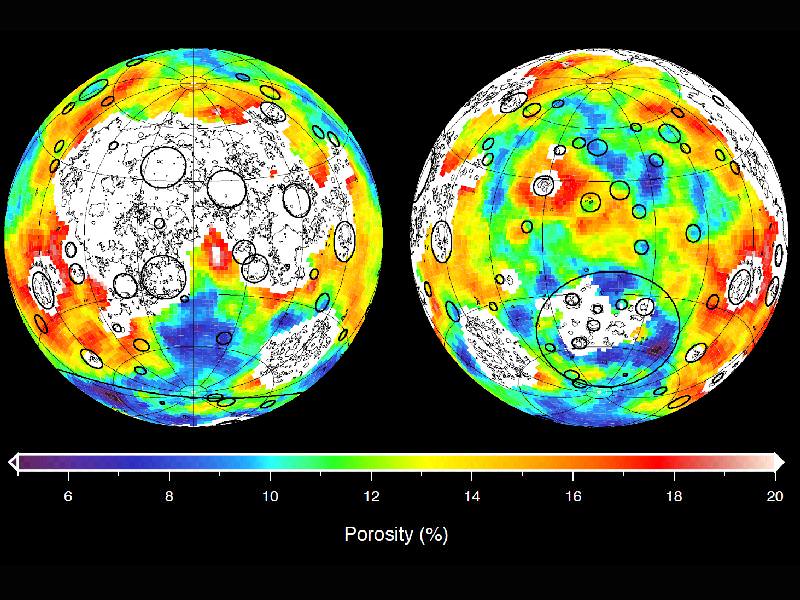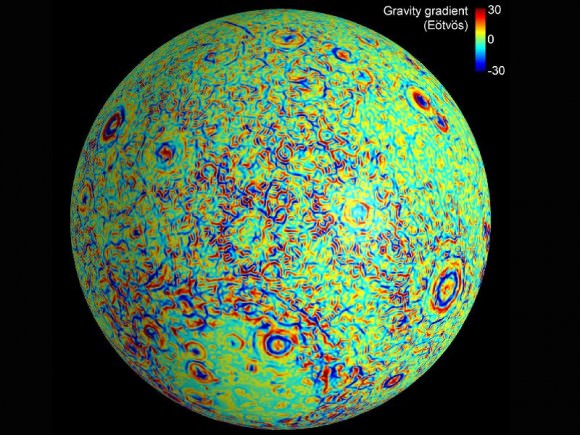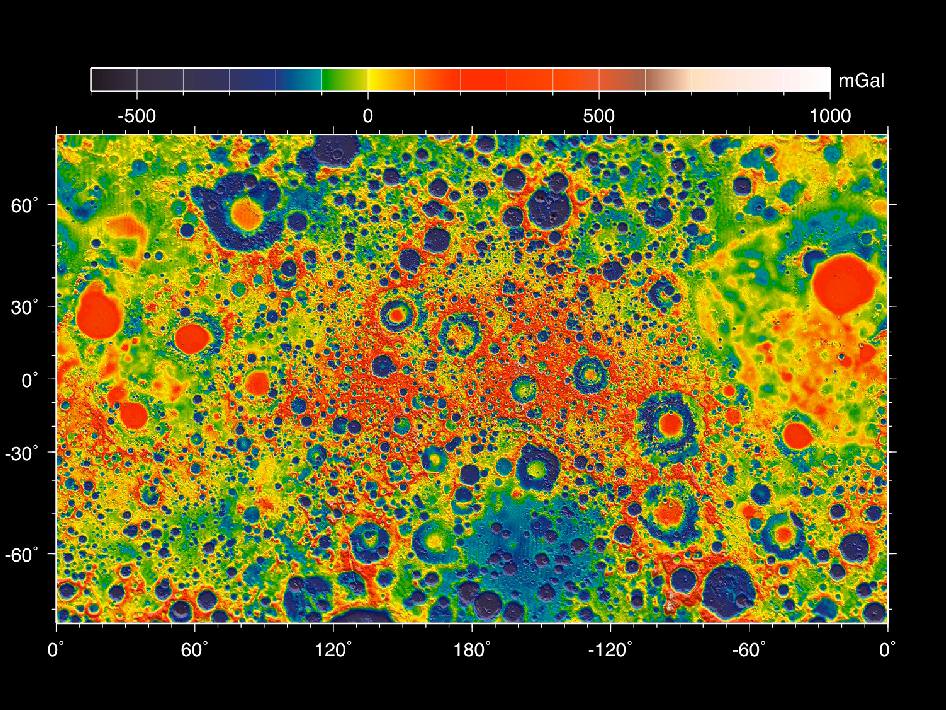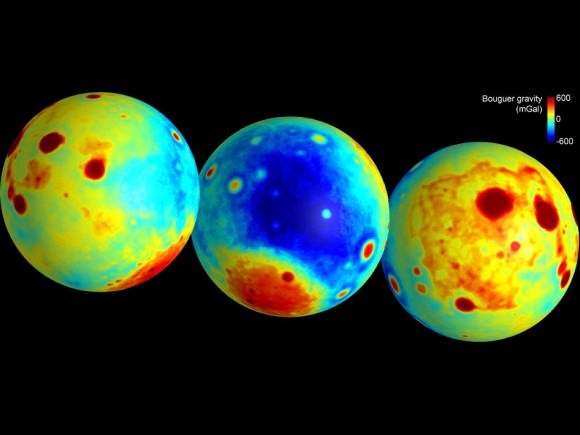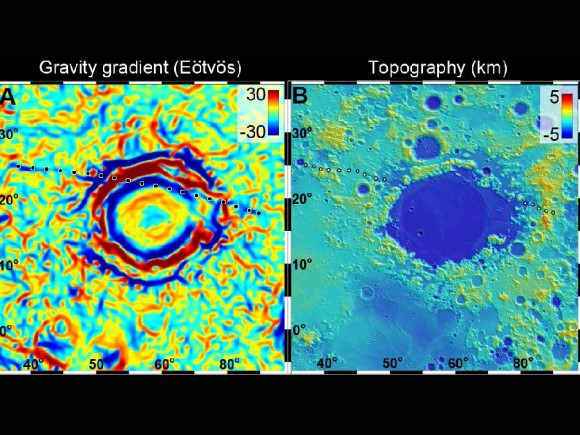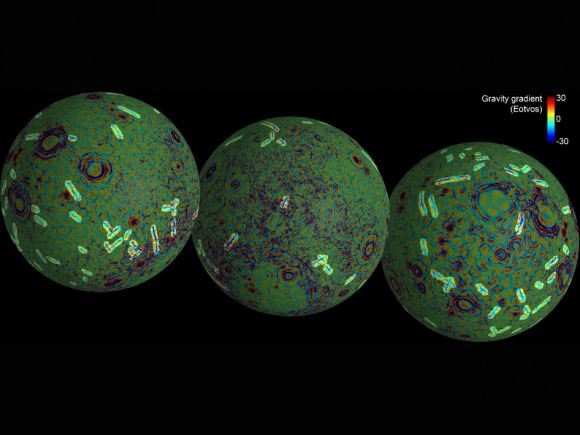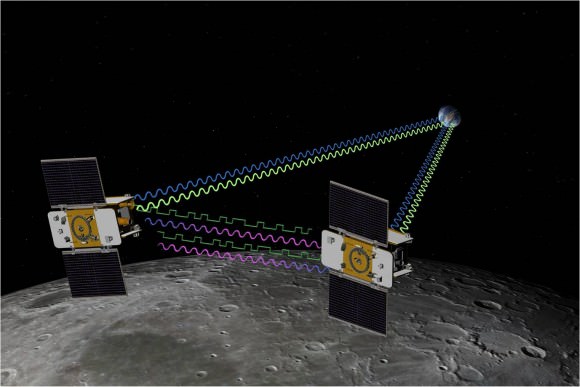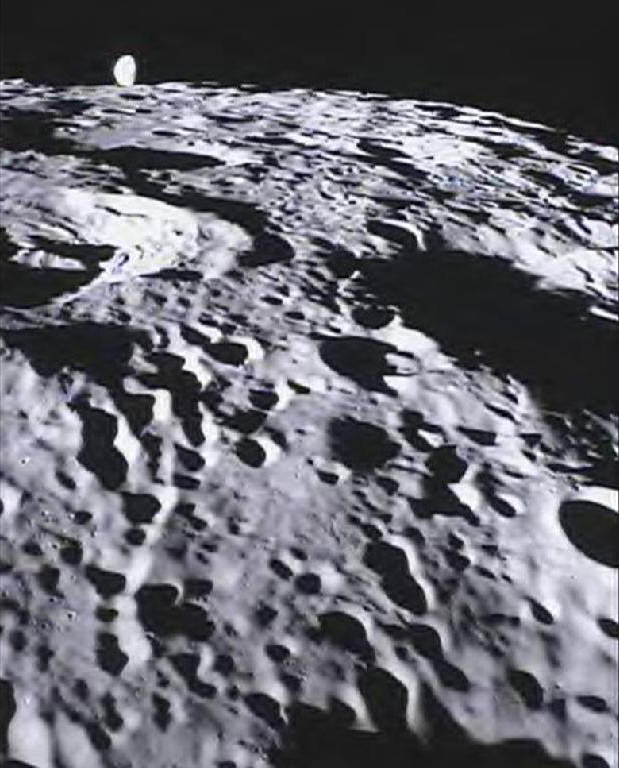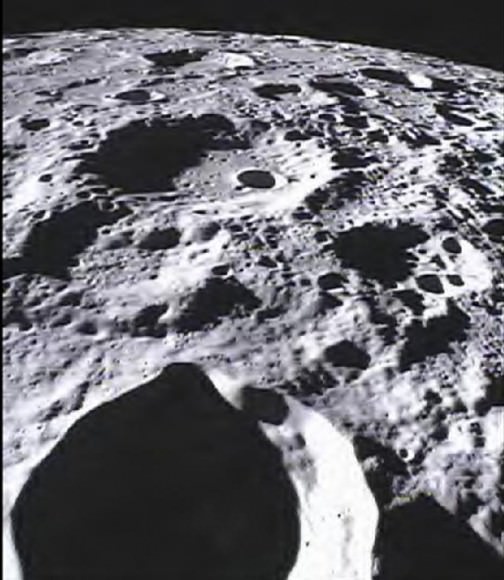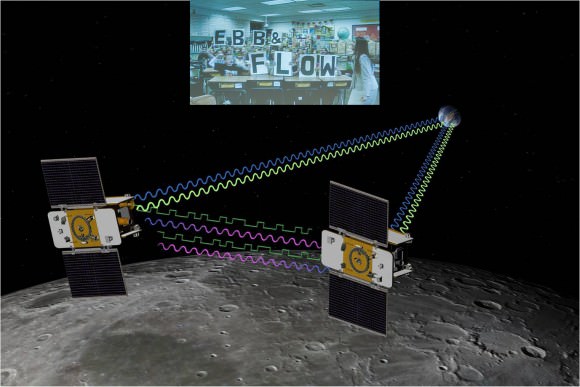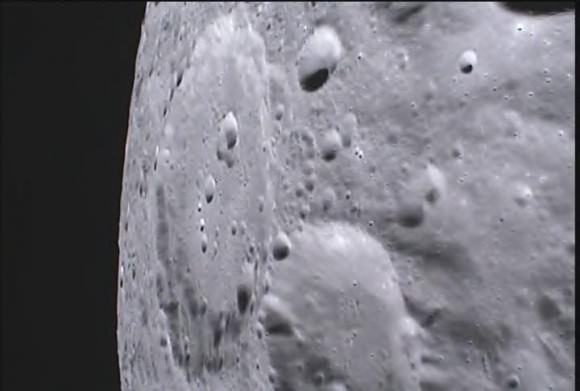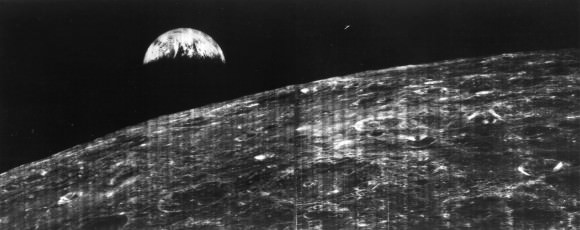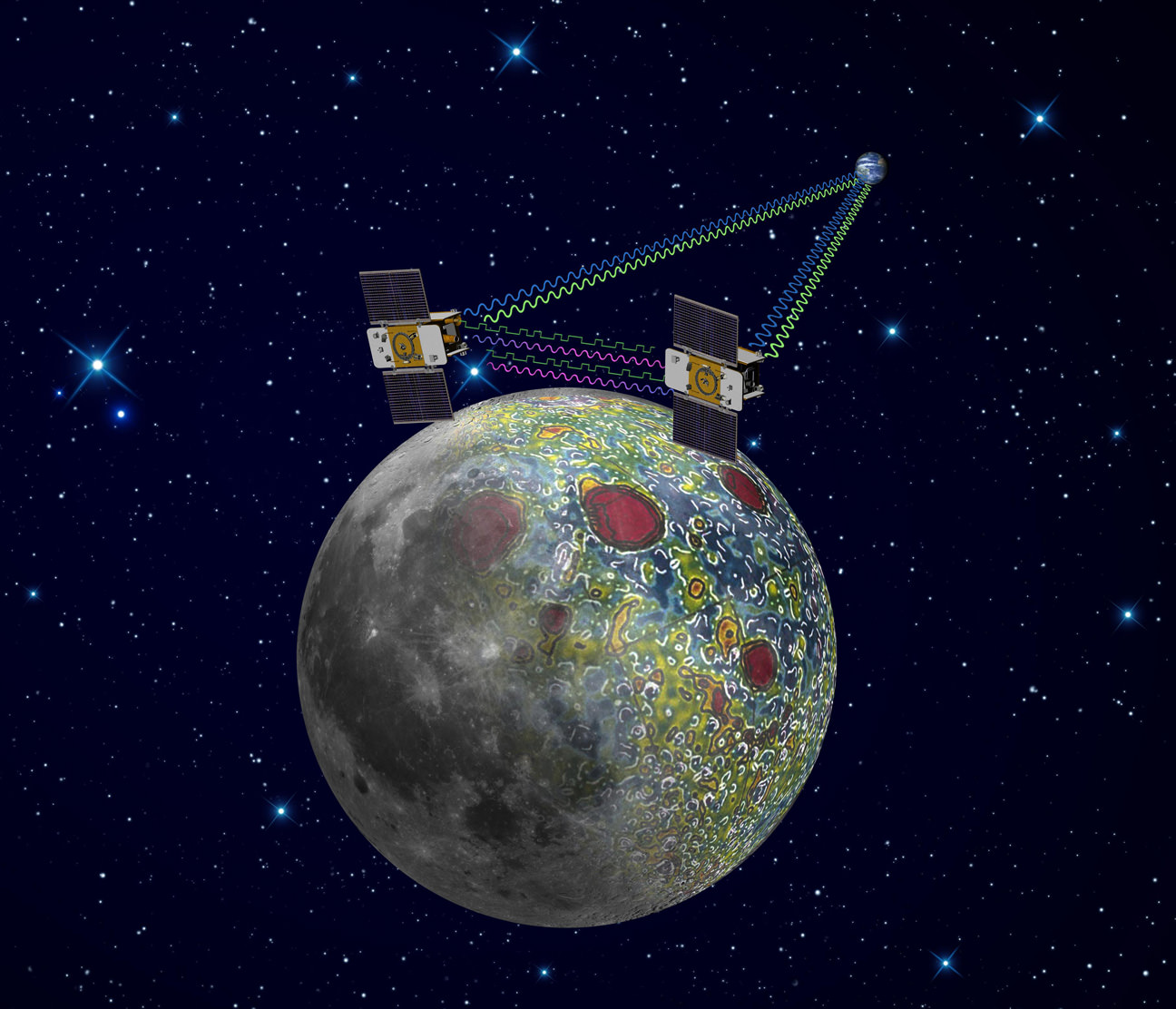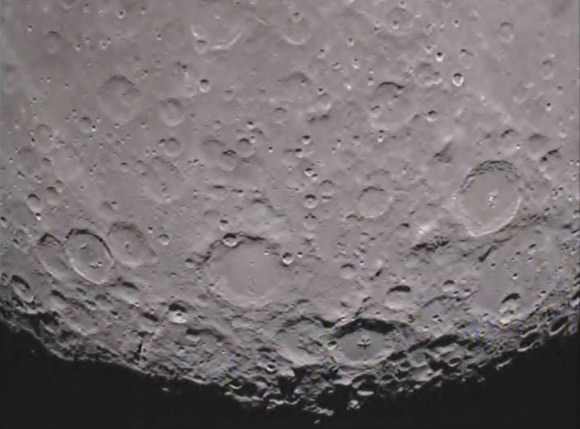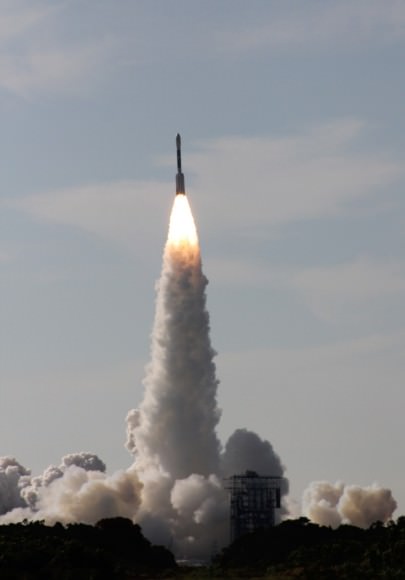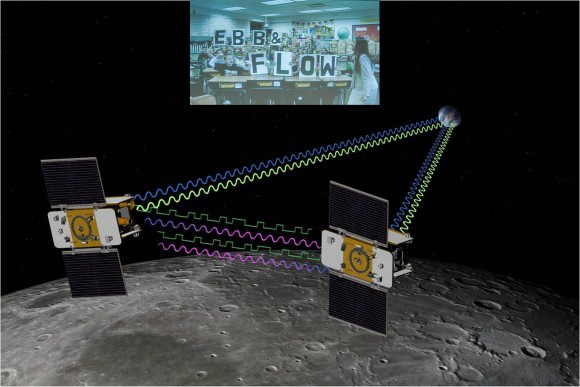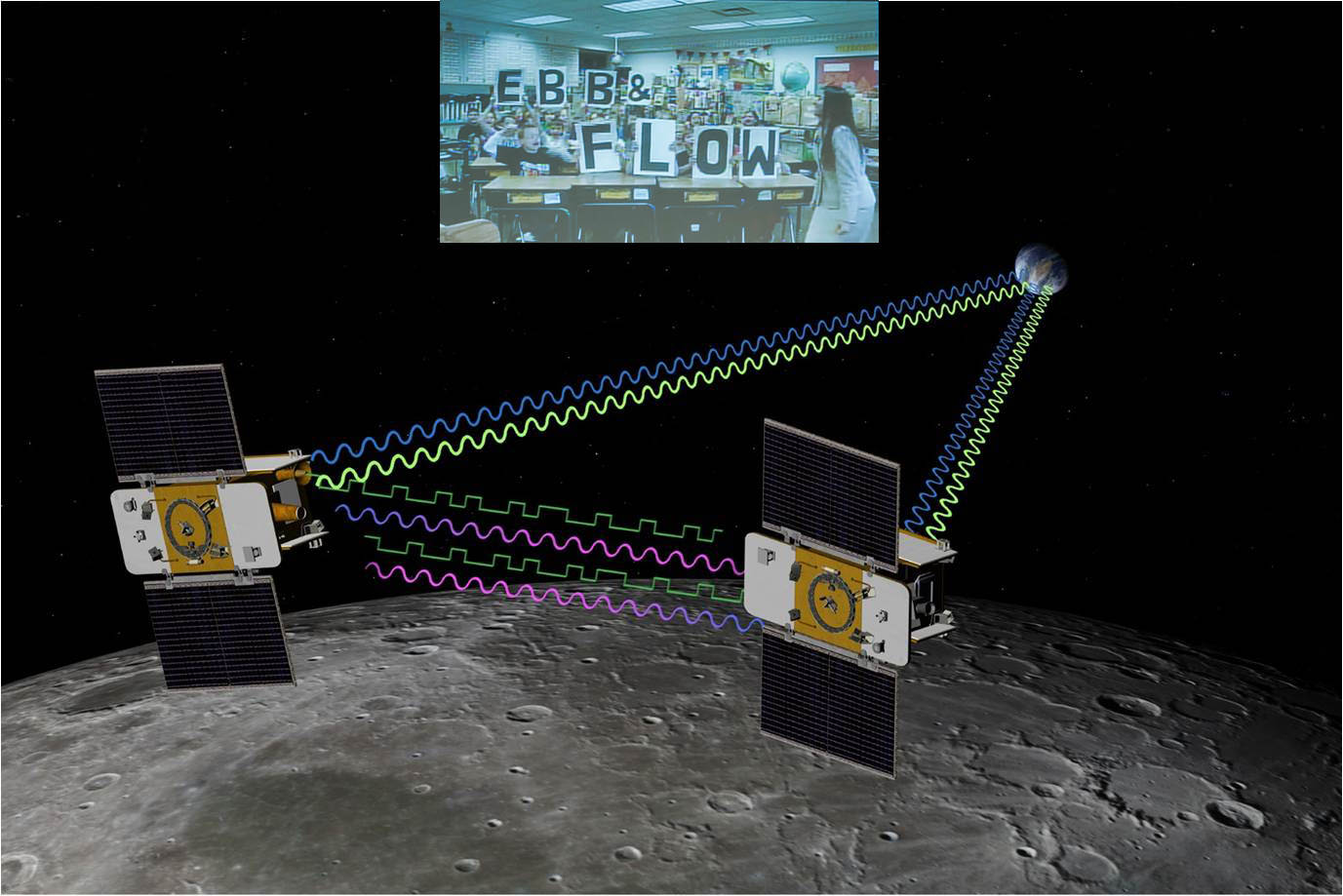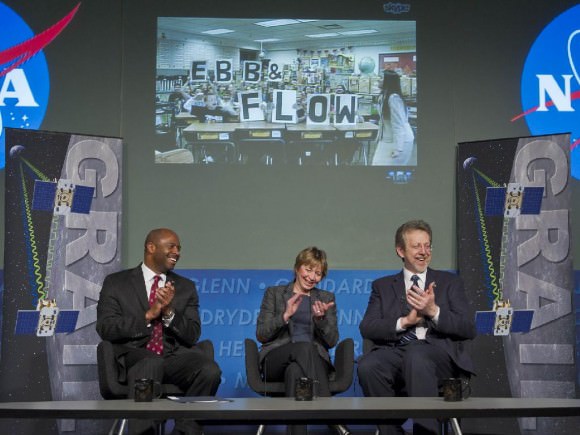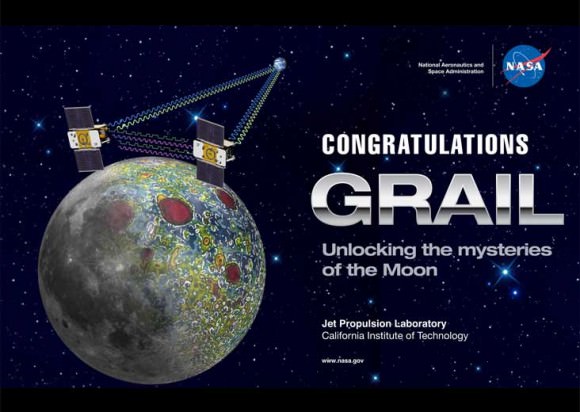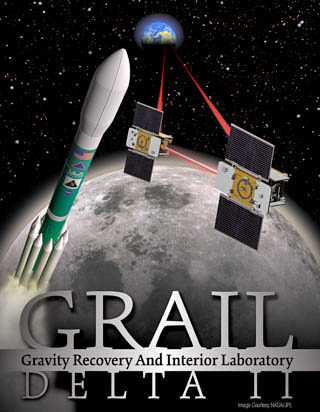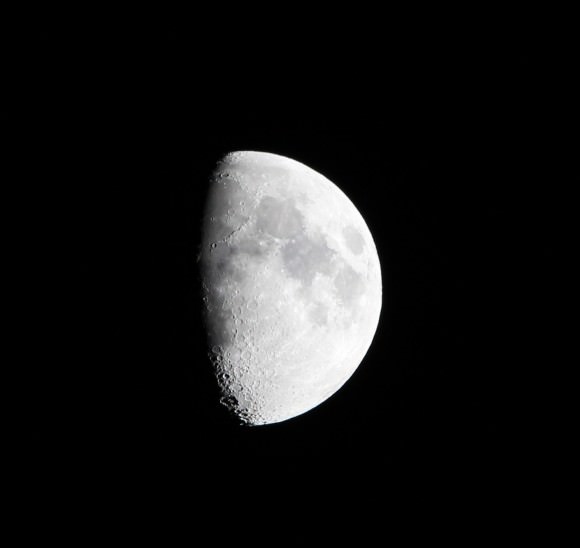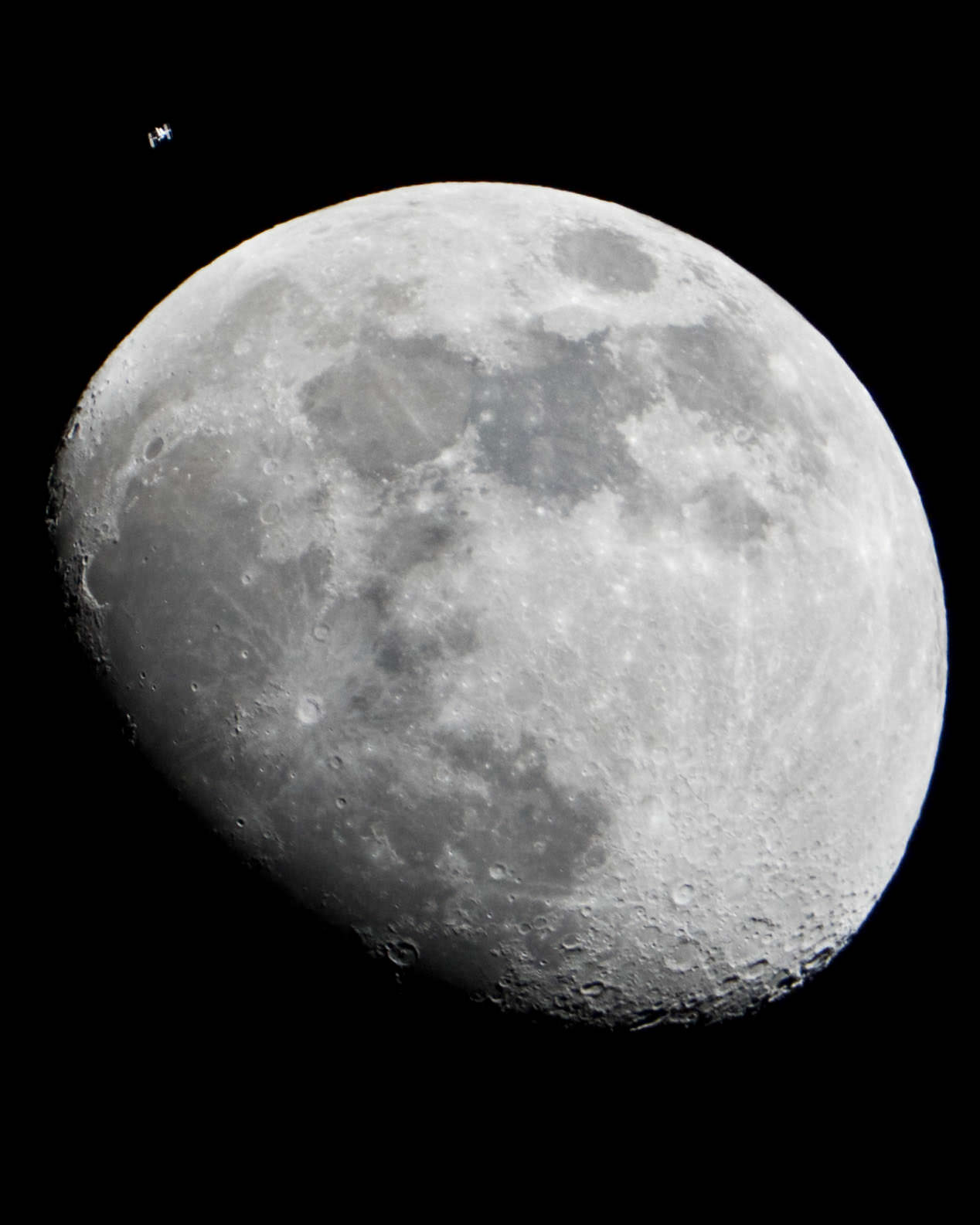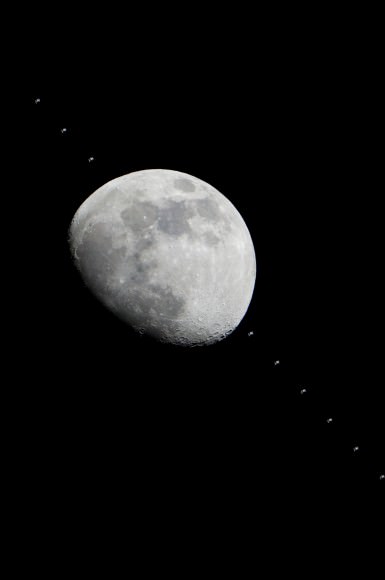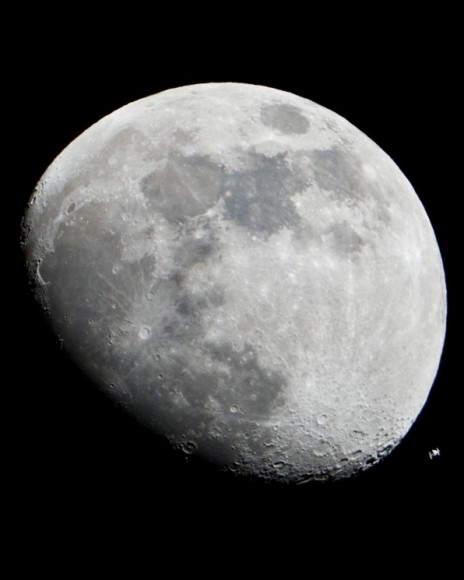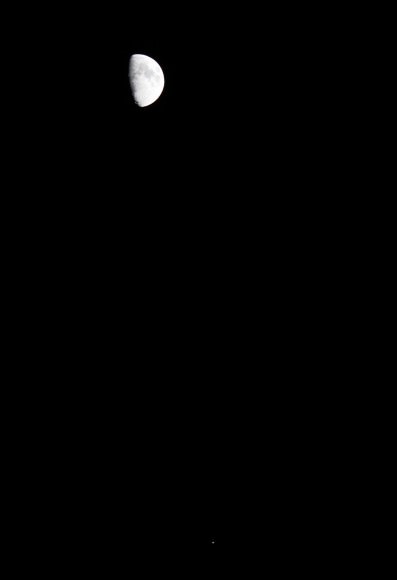The planned path of the GRAIL spacecrafts’ final orbit. Credit: NASA
“So long, Ebb and Flow, and we thank you,” said GRAIL project manager David Lehman of NASA’s Jet Propulsion Laboratory after the twin GRAIL spacecraft completed a planned formation-flying double impact into the southern face of 2.5-kilometer- (1.5-mile-) tall mountain on a crater rim near the Moon’s north pole. Mission team members estimate the two spacecraft were traveling at a speed of 1.7 kilometers per second (3,760 mph), and likely broke apart on impact. NASA said that most of what remains of the washing machine-sized spacecraft are probably buried in shallow craters, and the size of those craters will hopefully be determined when NASA’s Lunar Reconnaissance Orbiter is able to image the impact site in about two weeks.
NASA has honored the GRAIL team’s request to name Ebb and Flow’s impact sites after astronaut Sally Ride, who passed away earlier this year. She was America’s first woman in space and a member of the GRAIL mission team.
A simulation of the GRAIL impacts:
Impact occurred at 10:28:51 UTC (5:28:51 p.m. EST) and 10:29:21 UTC (5:29:21 p.m. EST). Right now it is night at the impact site, so sunlight should return within two weeks, enabling imaging of the site. LRO also took “before” images of the site during previous daylight orbits.
The impact marked a successful end to the GRAIL(Gravity Recovery and Interior Laboratory)mission, which in just a 90-day prime mission generated the highest-resolution gravity field map of any celestial body — including Earth — and determined the inner crust of the Moon is nearly pulverized.
“Ebb and Flow have removed a veil from the Moon,” said GRAIL principal investigator Maria Zuber during a televised commentary of the impacts today, adding that the mission will enable discoveries for years to come.
Data from GRAIL’s extended mission and main science instruments are still being analyzed, and the findings will provide a better understanding of how Earth and other rocky planets in the solar system formed and evolved.
GRAIL was NASA’s first planetary mission to carry cameras fully dedicated to education and public outreach. Ride, who died in July after a 17-month battle with pancreatic cancer, led GRAIL’s MoonKAM (Moon Knowledge Acquired by Middle School Students) Program through her company, Sally Ride Science. The camera took more than 115,000 total images of the lunar surface, and imaging targets were proposed by middle school students from across the country and the resulting images returned for them to study.
“Sally was all about getting the job done, whether it be in exploring space, inspiring the next generation, or helping make the GRAIL mission the resounding success it is today,” said Zuber. “As we complete our lunar mission, we are proud we can honor Sally Ride’s contributions by naming this corner of the Moon after her.”
Last Friday, Ebb and Flow, the two spacecraft comprising NASA’s Gravity Recovery and Interior Laboratory (GRAIL) mission, were commanded to descend into a lower orbit that would result in an impact Monday on a mountain near the Moon’s north pole.
Fifty minutes prior to impact, the spacecraft fired their engines until the propellant was depleted. The maneuver was designed to determine precisely the amount of fuel remaining in the tanks. This will help NASA engineers validate computer models to improve predictions of fuel needs for future missions.
Screenshot of engineering data showing trajectory of the two GRAIL spacecraft about 2 minutes before Ebb’s impact. Via NASA TV.
“Ebb fired its engines for 4 minutes 3 seconds, and Flow fired its for 5 minutes 7 seconds,” Lehman. “It was one final important set of data from a mission that was filled with great science and engineering data.”
Launched in September 2011, Ebb and Flow had been orbiting the moon since Jan. 1, 2012. The probes were intentionally crashed into the lunar surface because they did not have sufficient altitude or fuel to continue science operations.

